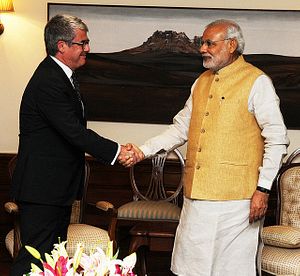On September 24, 2014 the European External Action Service announced that it was going to establish the post of EU ambassador to ASEAN (Association of South East Asian Nations). Once in office, this diplomat will be stationed in Jakarta, Indonesia, the capital of the largest ASEAN state. While political ties to other regions or countries on issues such as democratization, human rights, minority rights or women’s rights are always relevant to the EU (which does not merely view itself as an economic institution but as a promoter of certain normative values), the main driver for this push toward Southeast Asia is potential trade.
In 2015 ASEAN will create the “ASEAN Economic Community” (AEC). This will unify the Southeast Asian market and augment the free flow of goods, foreign direct investment, services and transnational capital flows, as well as create incentives for improving the educational standards of the labor force. As a result, the EU is interested in consolidating its presence in the region.
While this thrust towards Asia could be beneficial for both regional entities, it unfortunately excludes SAARC (South Asian Association for Regional Cooperation), the largest regional bloc in Asia and the world.
The SAARC states (India, Pakistan, Sri Lanka, Nepal, Maldives, Bhutan, Afghanistan, Bangladesh) are home to about a quarter of the world’s population. This alone should be reason enough to engage in a more fruitful manner with South Asia. But even if one leaves out the numbers, there are several issues that should be of interest to the EU. The conflicts and instability of the Afghan-Pakistani region, the impact of climate change and extreme weather in Bangladesh, the reconciliation process in Sri Lanka, Nepal’s constitutional limbo, authoritarianism in the Maldives and the refugee situation in Bhutan are all issues that the EU has the experience and capacity to assist and arbitrate.
Realpolitik may challenge the relevancy of normative politics and question whether it generates enough incentives to invest politically and financially. I would dispute this point and emphasize how the European Union came into existence and what it is based on. However, let’s take out the value-based side of politics for a moment.
India has a growing economy, with some speculating that in a few decades it could surpass China’s growth rate, and with the election of Prime Minister Narendra Modi the proponents of economic liberalism have found a champion. Nepal harbors the world’s second largest fresh water reserves, and with improved infrastructure and technical capability could turn into a major source of hydropower. Bangladesh has an extremely large garment industry, which heavily exports to the EU, and tourism plays a significant role in the Maldives.
The EU-ASEAN rapprochement also contains a strong emphasis on security. The secure flow of goods through the Malacca Strait is essential for global trade. When it comes to security concerns, South Asia unfortunately is the “grande dame” of potential conflicts. The patterns of enmity, to use a term from Barry Buzan, between the two nuclear powers India and Pakistan have stifled stability within the region. Bangladesh and the Maldives have experienced a resurgence of political Islam and jihad, and the future of Afghanistan remains far from certain.
Now that we have addressed the “why,” let us cover the “how.”
An initial symbolic sign of goodwill would be to create the position of EU ambassador to SAARC. Since the EU ambassador to ASEAN would be in Jakarta, sending the European envoy to New Delhi would be commensurate choice. There is only one problem: India is not really part of South Asia according to the EU’s institutional configurations. At first this sounds absurd, but the EU parliamentary delegation for South Asia does not include India, nor does it include Afghanistan, which have their own delegations. It seems hard to imagine constructive debates on Pakistan without including the presence of Afghanistan. How can the EU act in a supporting role with regards to the Indo-Pakistani conflict if they have separate delegations?
Of course, it is true that SAARC is not on the same organizational level as ASEAN at the moment. Currently, the level of cooperation is not very high and intraregional trade is extremely low. The Indo-Pakistani conflict is the elephant in the room, and since the SAARC charter does not include a clause where discussing bilateral issues can be put on the agenda, the ability to address this issue will not change in the foreseeable future. After Modi won the election, he made it very clear that one of his core policies would be to breathe life into regional integration. This is a tough task, but this is exactly why the EU should be pro-active by giving an external impetus and playing a supportive role with regards to SAARC.
To make a sincere approach, the EU has to establish a diplomatic connection with SAARC that includes all member states. The current institutional organization hinders a coherent and comprehensive SAARC strategy. The EU has in the past successfully expanded its bilateral programs with SAARC states, but this approach has its limitations. Europe should build a bridge between the “West” and the “East,” but it should not forget to include South Asia in that process.
Djan Sauerborn is Editor-in Chief and Policy Adviser at the South Asia Democratic Forum (SADF), a think tank based in Brussels, Belgium.

































